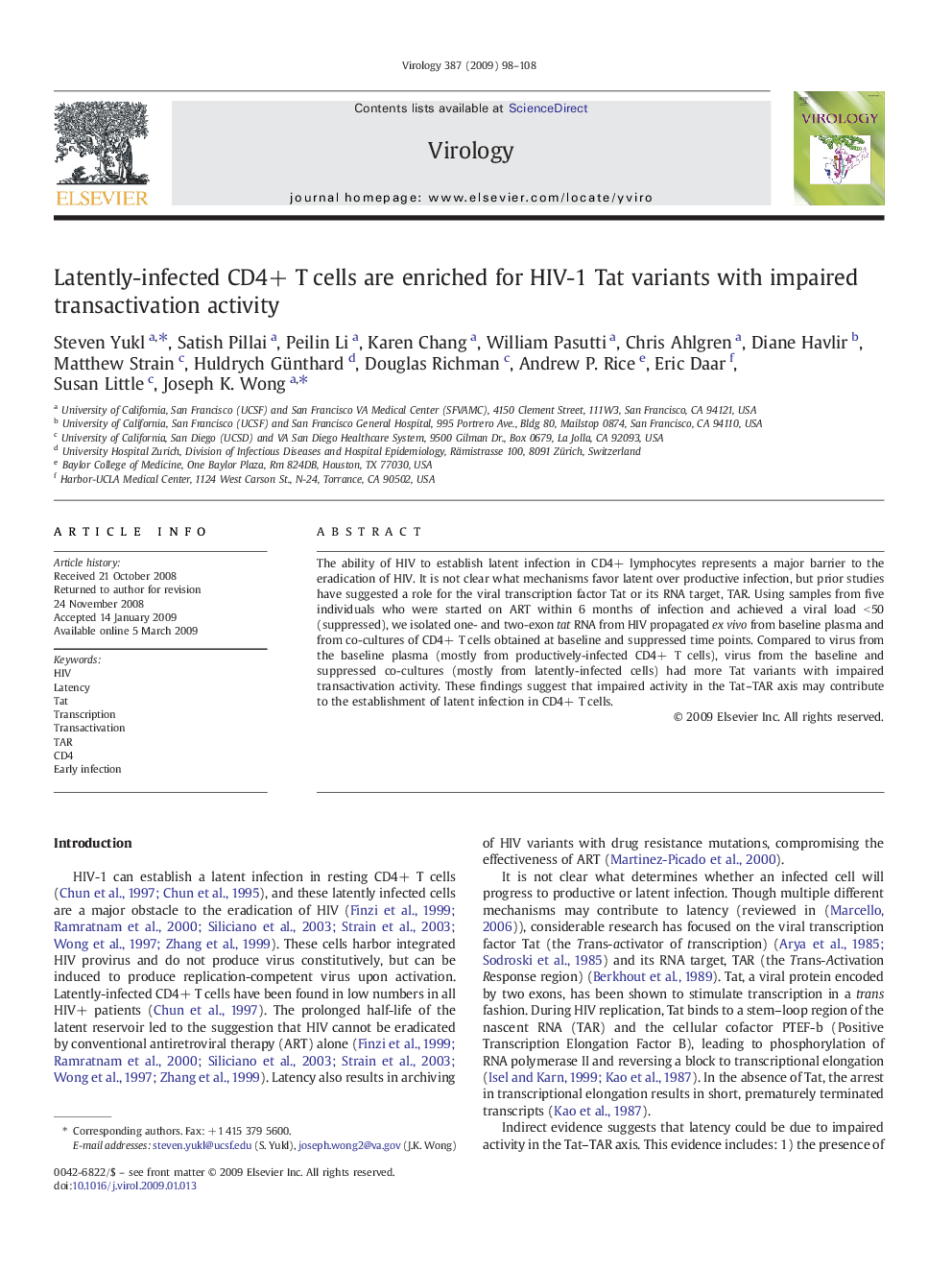| Article ID | Journal | Published Year | Pages | File Type |
|---|---|---|---|---|
| 3425455 | Virology | 2009 | 11 Pages |
The ability of HIV to establish latent infection in CD4+ lymphocytes represents a major barrier to the eradication of HIV. It is not clear what mechanisms favor latent over productive infection, but prior studies have suggested a role for the viral transcription factor Tat or its RNA target, TAR. Using samples from five individuals who were started on ART within 6 months of infection and achieved a viral load < 50 (suppressed), we isolated one- and two-exon tat RNA from HIV propagated ex vivo from baseline plasma and from co-cultures of CD4+ T cells obtained at baseline and suppressed time points. Compared to virus from the baseline plasma (mostly from productively-infected CD4+ T cells), virus from the baseline and suppressed co-cultures (mostly from latently-infected cells) had more Tat variants with impaired transactivation activity. These findings suggest that impaired activity in the Tat–TAR axis may contribute to the establishment of latent infection in CD4+ T cells.
